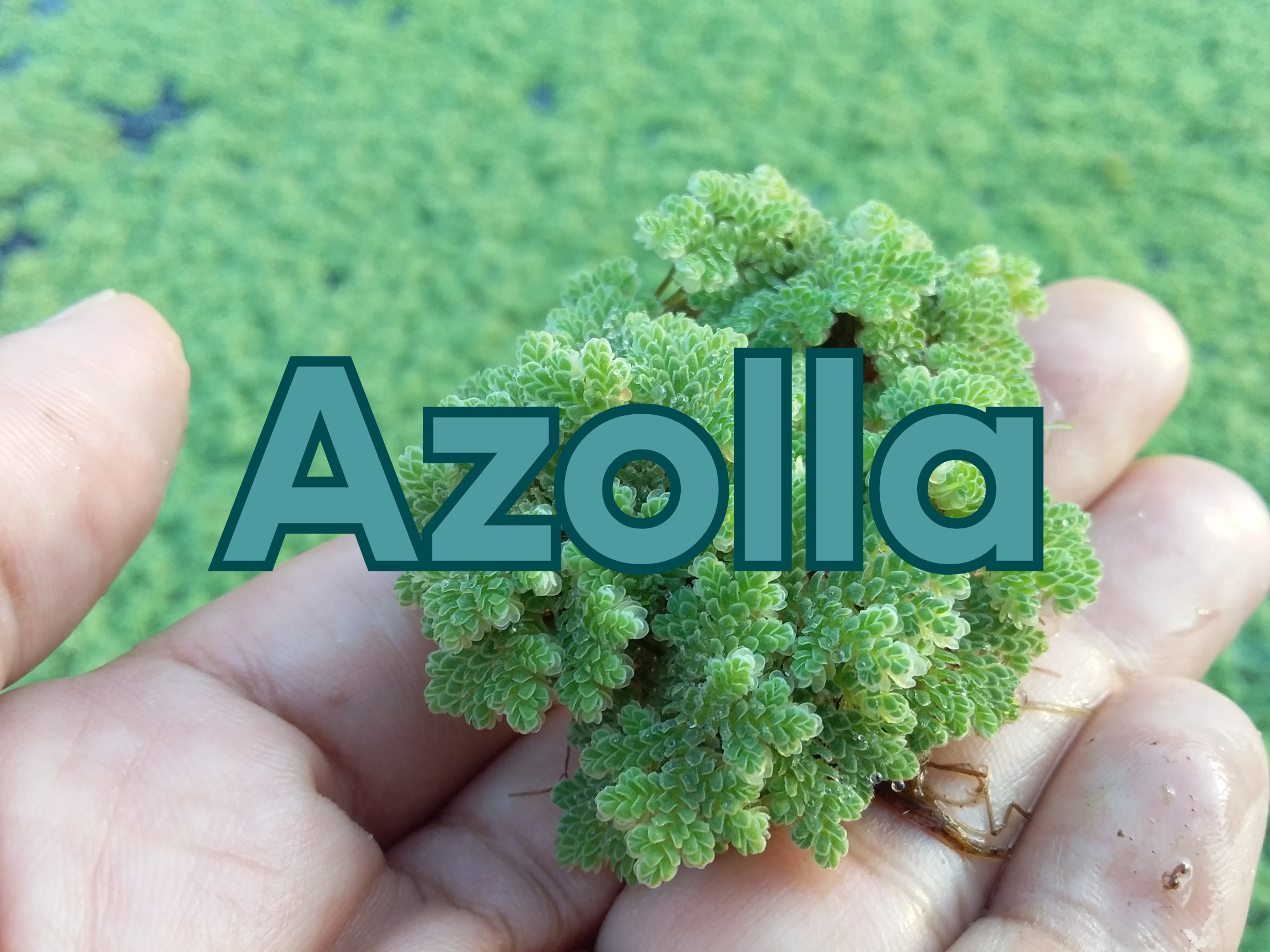From Other Fields: Could Azolla Feed Alberta Livestock?
Could Azolla Feed Alberta Livestock? A Look at the Opportunity and the Challenges
Feed costs remain one of the top pressures for livestock producers. In several parts of the world, farmers are experimenting with a fast-growing aquatic fern called Azolla as a low-cost, locally produced protein source. This article explores how Azolla is used in other countries, how it is grown, and whether it could have a place in West-Central Alberta.
What is Azolla?
Azolla is a small, free-floating water fern that forms a symbiotic relationship with the nitrogen-fixing cyanobacterium Anabaena azollae, allowing it to grow rapidly with minimal nitrogen fertilizer (Azolla Foundation, 2023; Pharma Journal Review, 2022).
On a dry matter basis, Azolla typically contains 20–30% crude protein, essential amino acids, and several vitamins and minerals (Azolla Foundation, 2023; Pharma Journal Review, 2022).
Because it grows on water rather than soil, Azolla does not compete with land-based forage or grain crops.
How Other Countries Are Using Azolla as Livestock Feed
Azolla has gained traction in:
China, Vietnam, India, Bangladesh, and the Philippines, where it is used as a supplement for poultry, pigs, dairy cattle, fish, and ducks (Cogent Review, 2024; Acharya et al., 2023).
Parts of Africa and the Middle East, including Kenya and Egypt, where Azolla is explored as a low-cost protein alternative to reduce dependence on soybean imports (BNRC Study, 2022; ScienceDirect Review, 2023).
Studies frequently report improved growth rates in poultry and small ruminants and 10–20% increases in milk yield when Azolla replaces a modest portion of concentrates (Acharya et al., 2023; Cogent Review, 2024).
How Azolla Is Grown
Most cultivation systems are simple:
A shallow pond or lined tank (10–30 cm water depth)
Partial shade
A small amount of manure or phosphorus fertilizer
A starter inoculum of Azolla (Pharma Journal Review, 2022; BNRC Study, 2022).
Under warm, humid conditions, Azolla can double its biomass every 3–5 days, producing several tonnes of fresh material per growing season (Pharma Journal Review, 2022).
Ideal growth conditions include:
Water temperatures: 18–28°C
pH: 5.5–7
High humidity & partial shade
Clean, low-contaminant water (BNRC Study, 2022).
These conditions are common in tropical/subtropical regions, but not typical for Alberta.
How Azolla Is Fed
Azolla is usually fed:
Fresh, drained and mixed into mash or concentrate
Sun-dried and ground into a meal to replace part of a protein ingredient (ScienceDirect Review, 2023).
Many studies limit inclusion to 10–25% of total concentrate due to moisture content, palatability, and the presence of tannins or other anti-nutritional compounds (Acharya et al., 2023).
Even in regions where Azolla is well established, it is used as a supplement, not a full replacement for conventional feed.
Could Azolla Work in West-Central Alberta?
Potential Benefits
A fast-growing, low-cost protein supplement that doesn’t require cropland.
A good fit for farmyards that already have greenhouses, aquaponics, or controlled water systems.
Could be trialed for poultry, pigs, rabbits, or small ruminants on a small scale.
Major Challenges
1. Climate Limitations
Azolla’s optimal temperature range (18–28°C) and need for high humidity mean Alberta’s outdoor conditions are not suitable for most of the season (BNRC Study, 2022).
Outdoor ponds would freeze for much of the year, making Azolla viable only as:
A short-season annual, or
A crop grown in a greenhouse or heated enclosure.
2. Water Quality & Infrastructure Needs
Livestock dugouts typically have fluctuating levels, turbidity, and nutrient loads that can inhibit Azolla growth.
Lined ponds or indoor tanks may be required — adding cost and management.
3. Invasive Species Risk
Some Azolla species are considered invasive in parts of North America.
Any Alberta trial would require:
Checking Alberta Invasive Species Council listings
Preventing escape into natural water systems
Ensuring containment measures are in place
4. Feed Safety & Lack of Canadian Research
Azolla can accumulate contaminants from water, meaning water quality must be carefully managed.
There is also little to no research on Azolla in Canadian livestock systems.
Any on-farm trial would require conservative inclusion rates and nutritionist support.
Practical Takeaway
Azolla is a promising idea from warmer regions, but not yet a practical mainstream feed option for Alberta.
It may be worth small-scale testing by producers with controlled environments, or future research trials to evaluate:
Biomass potential under prairie conditions
Cost-benefit in a heated environment
Ration inclusion levels for local livestock
For most producers, Alberta-adapted forage systems and ration optimization remain more impactful and cost-effective than introducing a new aquatic crop.
Sources & Further Reading
Azolla Foundation (2023).
Azolla as a Livestock Feed.
https://theazollafoundation.org/azollas-uses/as-a-livestock-feed/
Acharya, P. et al. (2023).
Azolla: An alternative feed for sustainable livestock production.
International Journal of Veterinary Sciences & Animal Husbandry.
https://www.veterinarypaper.com/pdf/2023/vol8issue3S/PartA/S-8-2-3-574.pdf
Cogent Review (2024).
Azolla as a beneficial macrophyte for livestock feed: A review.
Cogent Food & Agriculture.
https://www.tandfonline.com/doi/pdf/10.1080/23311932.2024.2367804
Pharma Journal Review (2022).
Azolla for livestock feeding. The Pharma Journal.
https://www.thepharmajournal.com/archives/2022/vol11issue7S/PartAZ/S-11-7-404-528.pdf
BNRC Study (2022).
Azolla pinnata for livestock feeding.
Bulletin of the National Research Centre.
https://bnrc.springeropen.com/articles/10.1186/s42269-022-00752-w
ScienceDirect Review (2023).
Azolla processing technologies for alternative feed raw material.
Future Foods (ScienceDirect).
https://www.sciencedirect.com/science/article/pii/S2590123023004401
Applied Research Disclaimer
This article is for learning and awareness. It highlights practices used in other regions and is not a recommendation for adoption in Alberta without further research, local trials, regulatory review, and nutritional consultation.


